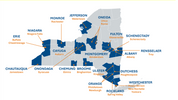It is not enough to provide your employees with Personal Protective Equipment (PPE), say workplace safety regulators. The U.S.Department of Labor, Occupational Safety and Health Administration (OSHA) and the CDC guidelines, as well as state mandates on use of PPE, emphasize all employees coming into contact with members of the public must be provided PPE including masks and gloves. But employers in every type of business that comes face to face with each other or the public must train their employees and respond in the case of an infection or risk of COVID-19 exposure.
PPE in the workplace has long included supply of PPE plus prevention and training, and the COVID-19 pandemic crisis is no exception.
Prevention involves conducting a thorough hazard risk assessment, and responding with physical barriers, changes in ingress, egress, adapted business transaction protocols, and safety awareness at all levels.
Training involves teaching every employee about the risks and about the capabilities and limitations of the supplied equipment, so they understand the proper use of the PPE, how to put it on, remove it safely, when to reuse or dispose, how to clean it, and how much it does or does not mitigate risk. None of these efforts is 100% protection, and does not mean the COVID-19 virus cannot be spread. Educating staff on the importance of staying home, self-isolating, and waiting until they can be tested is as important as hand washing and maintaining social distance while wearing masks and gloves.
When risks or outbreaks occur, as they are currently in meatpacking facilities around the country, isolation of sources of infection, including in workers, with reporting to management, are essential.
Employers should document employee training, which should include ample opportunity for employees to ask questions and understand answers.
"Standards that apply to preventing occupational exposure to SARS-CoV-2 also require employers to train workers on elements of infection prevention, including PPE."
 unknownx500
unknownx500










